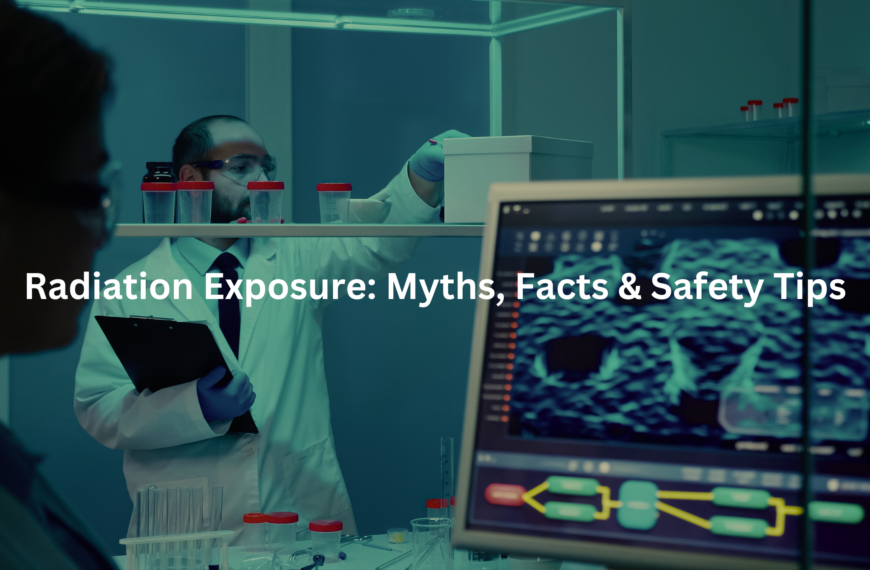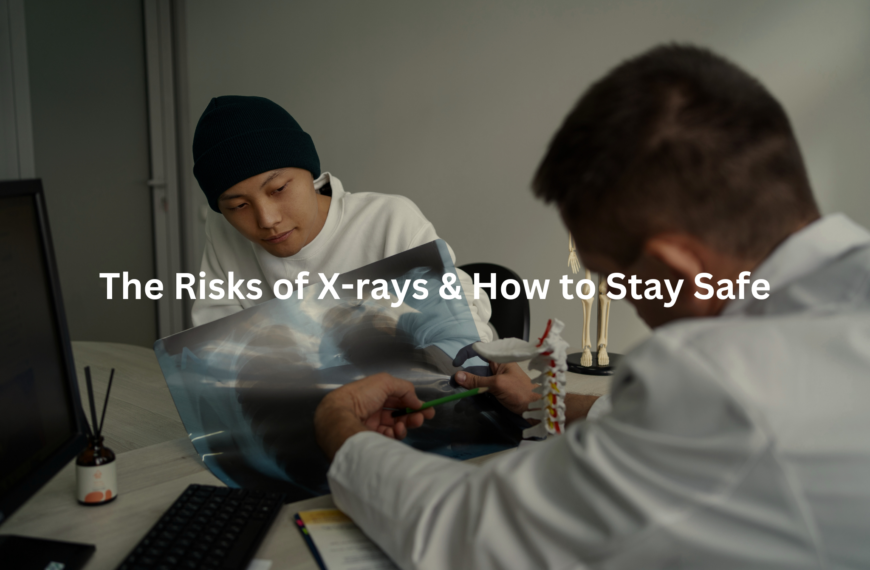Are X-rays safe during pregnancy? Many mums worry, but the truth might surprise you. Learn the risks, safety measures, and when they’re necessary.
X-rays during pregnancy raise questions about safety (radiation exposure ranges from 0.001 to 0.1 millisieverts for most diagnostic X-rays). Medical professionals use protective lead shields and carefully position equipment to keep radiation away from the growing baby. The risks from a single X-ray are quite small.
Most diagnostic X-rays don’t expose the belly area directly, making them even safer. For chest or dental X-rays, the radiation barely reaches the baby at all. Pregnant women should always tell their healthcare team about their pregnancy. This lets doctors choose the right imaging tests and use proper safety measures when X-rays can’t be delayed. Keep reading to understand more!
Key Takeaway
- X-rays can be used safely during pregnancy if the benefits outweigh the risks.
- The radiation dose to a developing baby is usually very low.
- Consult with a doctor if an X-ray is needed during pregnancy.
Understanding Radiation Risks
X-rays during pregnancy raise questions about safety for many expecting mothers. The mechanical sounds of imaging equipment often create concern, yet medical evidence shows most X-rays carry minimal risk to unborn babies.
Background radiation exists everywhere – in soil, air, and food. Australians receive about 1.5-2 millisieverts (mSv) yearly from natural sources, while developing babies get roughly half that amount(1).
Key factors affecting X-ray safety:
• Location of scan (teeth, arms, legs = low exposure)
• Radiation strength (chest X-ray: 0.1 mSv, CT scan: higher)
• Available alternatives (ultrasound, MRI)
Lead shielding provides protection during necessary X-rays. The Australian Radiation Protection and Nuclear Safety Agency confirms single X-rays rarely cause issues – it’s multiple high-dose exposures that need careful consideration.
Pregnant patients should discuss concerns with healthcare providers, who can explain specific risks and protective measures for their situation. Proper shielding and limited exposure keep both mother and baby safe.
The Dose Matters
Medical radiation numbers tell a clear story. A pregnant woman’s X-ray exposure varies based on the body part and pregnancy stage. Chest X-rays deliver about 0.01 mSv to an unborn baby, while pelvic CT scans can reach 10 mSv.
The risk factors shift with these numbers. A standard childhood cancer risk of 1 in 500 might change to 1 in 200 with higher radiation exposure.
Medical professionals consider several factors:
- Imaging type (X-rays and CT scans use radiation, MRIs and ultrasounds don’t)
- Medical necessity
- Protective measures (lead aprons reduce scatter radiation)
During pregnancy’s second trimester, some scans can wait, others can’t. The benefits often outweigh the risks when a doctor recommends imaging. Smart questions about radiation dose, alternative options, and protection methods help make informed choices.
Pregnant patients should discuss concerns with their healthcare provider and ask about using protective equipment when possible.
Safety Measures to Protect Your Baby
Sources: The Radiology Coach.
X-ray protection during pregnancy needs careful thought(2). The heavy lead apron (weighing about 3.5 kg) serves as the first line of defence against radiation exposure.
Different X-ray procedures carry different risks:
- Dental X-rays: 0.005 mSv (similar to eating 50 bananas)
- Chest X-rays: 0.1 mSv
- Pelvic CT scans: up to 10 mSv
The location of X-rays affects radiation exposure to the baby. X-rays of arms, legs or teeth pose minimal risk, while abdominal scans need more caution. Medical staff can reduce exposure through:
- Proper lead shielding
- Careful positioning
- Lower radiation doses
- Adjusted scanning angles
Pregnant patients should discuss with their doctors about:
- The necessity of the scan
- Alternative imaging options
- Possible dose reduction methods
Modern X-ray machines use digital sensors that need less radiation than older film-based systems, making most diagnostic imaging procedures safer when proper precautions are taken.
What if You’ve Already Had an X-ray?

X-rays during early pregnancy raise questions for many expectant mothers. The good news? Most diagnostic X-rays don’t pose risks to unborn babies.
Different X-rays deliver different radiation amounts:
- Dental X-rays: 0.01 mSv
- Chest X-rays: 0.1 mSv
- Pelvic CT scans: 25 mSv
Medical staff follow the ALARA principle (As Low As Reasonably Achievable), using shields and minimal exposure times. The baby’s risk depends on(3):
- Gestational age
- Type of X-ray
- Body part exposed
- Distance from the radiation source
A medical physicist can measure exact radiation doses. Most diagnostic X-rays deliver less than 1 millisievert (mSv), well below harmful levels. Even pelvic X-rays rarely reach concerning doses.
Pregnant women should tell healthcare providers about possible pregnancy before any X-rays. This helps doctors choose safer alternatives when needed, like ultrasound or MRI scans.
The Importance of Informed Consent

Medical staff must improve their communication about X-rays with pregnant patients. The process needs more than quick paperwork – it demands clear choices and open discussions.
Proper informed consent includes three key parts:
Risk explanation: A chest X-ray delivers roughly 0.01 mGy radiation to an unborn baby (barely noticeable), while a pelvic CT scan reaches about 10 mGy. Medical guidelines consider doses under 1 mGy generally safe for the fetus.
Benefit assessment: Medical teams should check if:
- The scan is urgent
- It can be delayed
- Alternative tests like ultrasound might work better
Patient involvement: Each pregnant person views risk differently. Some want zero exposure, others accept small risks based on statistics. While doctors provide scientific facts about radiation exposure, the final decision belongs to the patient.
Medical professionals must remember that informed consent goes beyond signatures – it means giving pregnant patients genuine control over their healthcare choices.
FAQ
Can X-ray exposure during pregnancy harm the unborn child?
The amount of radiation from a single X-ray exam is generally low and not thought to harm the developing baby. However, repeated or high-dose X-ray exams during pregnancy may increase the risk of fetal radiation effects, such as developing cancer later in life. The risks and benefits of any X-ray examination should be carefully considered, especially in the first trimester when the baby is most vulnerable.
How much radiation is safe for a pregnant patient?
Radiation dose limits for pregnant patients are designed to protect the unborn child. For most X-ray exams, the fetal dose is well below the limits considered high risk. However, the specific amount of radiation exposure depends on the type of exam, the gestational age, and the mother’s medical condition. Healthcare providers work to keep fetal radiation exposure as low as possible while still providing necessary care.
What are the effects of ionising radiation on the developing baby?
Exposure to high levels of ionising radiation during pregnancy, such as from nuclear accidents, can increase the risk of harmful effects on the developing baby. This includes an increased risk of childhood cancer and other conditions. However, the low levels of radiation from most medical imaging procedures, like X-rays and CT scans, are not thought to have significant adverse effects on the unborn child.
When is it safe to have a CT abdomen during pregnancy?
CT scans of the abdomen and pelvis can provide important diagnostic information, but they also involve higher radiation exposure compared to other imaging tests. The decision to perform a CT scan during pregnancy should carefully weigh the potential benefits against the small increased risk to the fetus. In many cases, alternative imaging tests like ultrasound or MRI may be recommended instead if they can provide the needed information.
Is it safe to have a nuclear medicine test during pregnancy?
Nuclear medicine tests, such as a perfusion scan, use small amounts of radioactive materials. While the radiation exposure is generally low, it can vary depending on the specific test. Pregnant patients should discuss the risks and benefits with their healthcare provider. In some cases, alternative tests that do not use ionising radiation may be recommended, or the procedure may be postponed until after the baby is born.
Conclusion
X-rays during pregnancy need careful thinking. While the risks stay low (about 0.001-0.1 millisieverts for a chest X-ray), pregnant women should still talk to their doctors first. The doctor checks if the X-ray is needed right now or can wait until after the baby comes. They might use special lead shields to protect the growing baby. Most medical places follow strict rules about X-rays, making them quite safe for mums-to-be who really need them.
References
- https://www.pregnancybirthbaby.org.au/radiation-exposure-during-pregnancy
- https://www.wacountry.health.wa.gov.au/~/media/WACHS/Documents/About-us/Policies/Radiology—Imaging-Pregnant-Patients-Procedure.pdf?thn=0
- https://www.excelsioraccreditation.com.au/dias/alara-rules-for-radiation-protection-safeguarding-medical-professionals/




